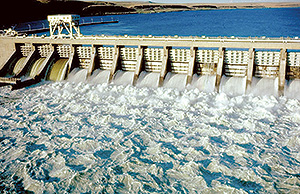Staff Reporter
Oregon’s Infrastructure Earns a C- on ASCE Report Card

Oregon’s infrastructure received a C- on its report card from the American Society of Civil Engineers.
The report card, released May 15, assessed bridges, dams, drinking water, energy, inland waterways, levees, ports, rail, roads and wastewater.
Roads earned a C+, the best score on the card. Some 90% of the state’s highways are in fair or good condition.
Oregon ASCE 2019 by on Scribd
Legislation like the Keep Oregon Moving Act of 2017, which will rely on taxes and fees to produce $5.3 billion in revenue in its first 10 years, gave a boost to road projects meant to alleviate congestion, particularly in the Portland area.
Bridges, which form important links between Oregon’s rural communities and major cities, received a C. Although its structurally deficient bridges are relatively low (5.2%, according to the American Road and Transportation Builders Association), many are on the cusp of deficiency. More than 1,000 bridges 50 years and older are classified as “nearly structurally deficient.”
Mark Libby, chair of the Oregon Infrastructure Report Card Committee, said maintaining the condition of bridges as they continue to age presents a substantial challenge.
“Our concern is how many of those are soon going to be in poor condition and the increased maintenance cost that may be associated with those bridges,” Libby said.
Libby said despite the benefit of recent legislation, such as the Keep Oregon Moving Act, more funding will be required in order to keep pace with the state’s aging infrastructure needs. Some 103 bridges should be replaced annually to preserve current inventory conditions, according to the report card.

Dams earned a D+ on the report card. McNary Dam on the Columbia River by U.S. Department of Energy/Flickr.
“[The legislation] was a good start,” Libby said. “It’s not as much as they had originally sought and it’s not as much as we need.”
The report card urges leaders to keep seismic events, such as the impending Cascadia Subduction Zone earthquake, in mind when improving existing infrastructure and creating new systems. The Cascadia Subduction Zone is a fault that stretches down the Pacific Coast from Vancouver Island to Cape Mendocino, Calif. The shifting of the plates periodically creates “megathrust” earthquakes.
ASCE estimates that the likelihood of experiencing a magnitude 9 Cascadia Subduction Zone earthquake over the next 50 years is about 20% and said that many of Oregon’s bridges, dams and water systems aren’t built to handle such an event.
“Earthquakes certainly are a big threat for us. That’s a big challenge,” Libby said. “We don’t have enough focus on the seismic resilience. It’s just hard to get people’s attention on something that hasn’t happened in 300 years. If we don’t start doing something to address it, we are going to pay dearly for our inaction.”

